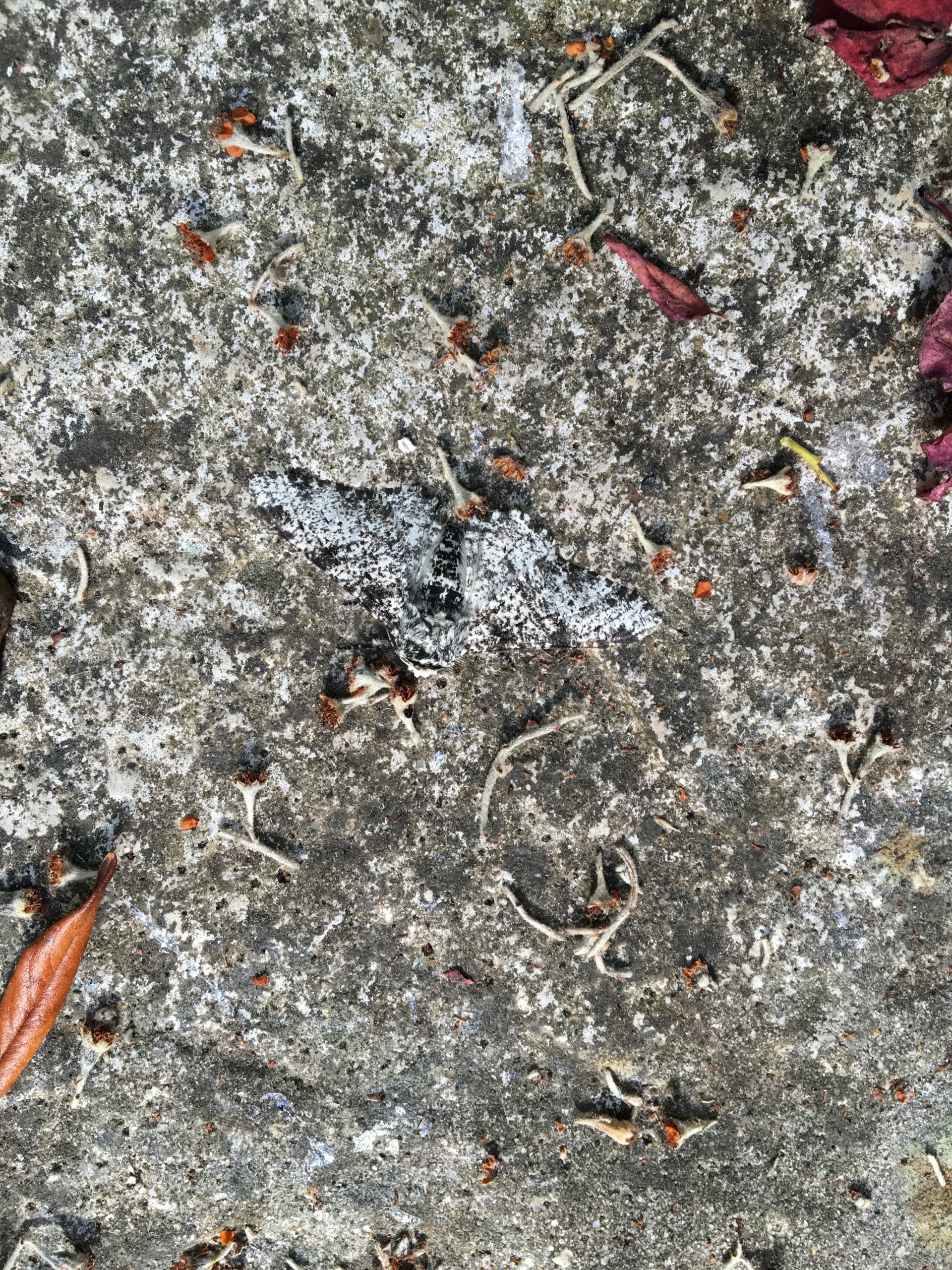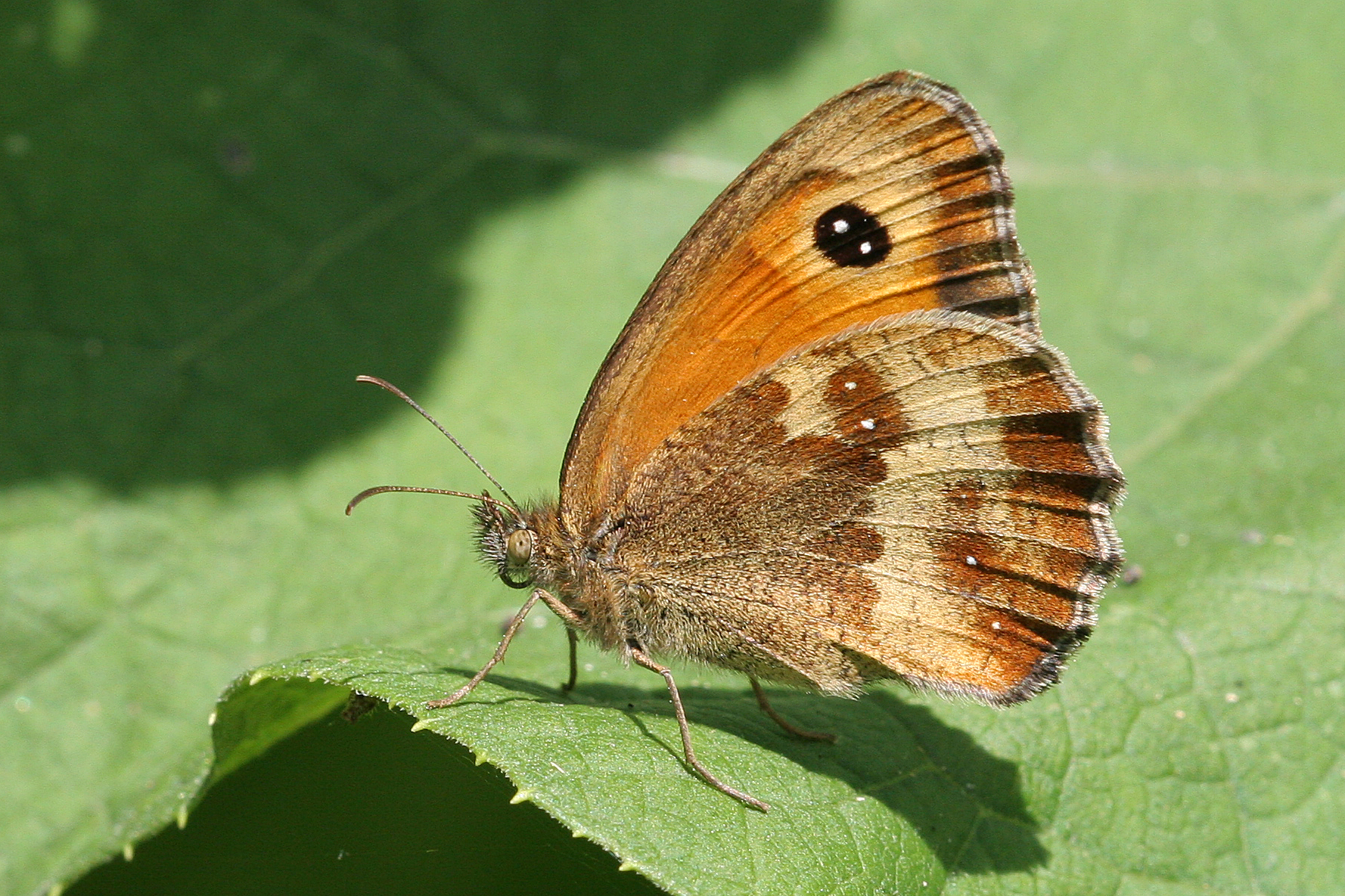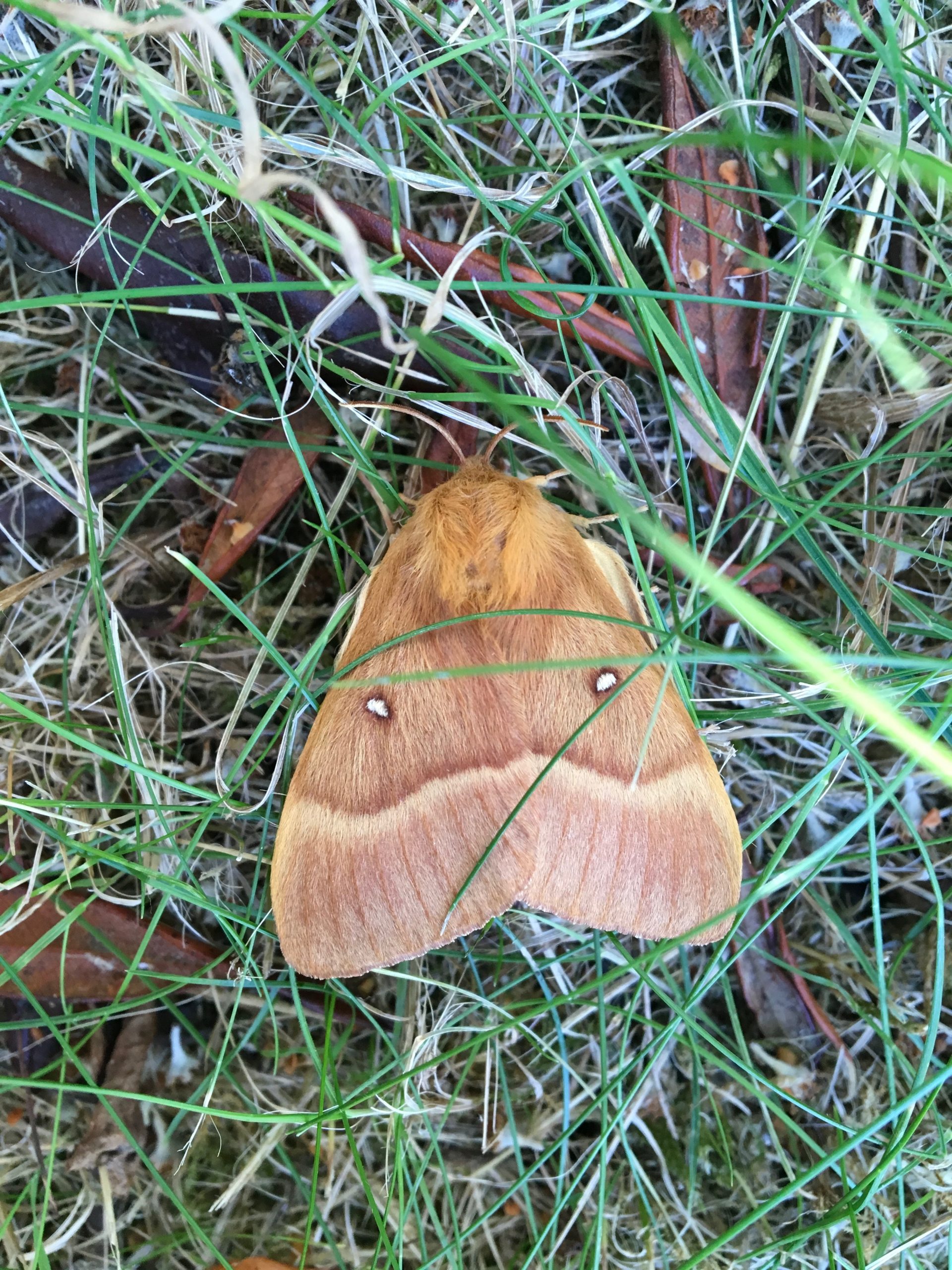moth camouflage
24 Jul 2022
Can you spot this Peppered Moth on our paving? Great camouflage.
jeremy
starlings
19 Jul 2022
Various people have asked me about the dense flock of 'black' birds that keeps whooshing around in a tightly-packed formation, settling occasionally on the wires like something out of Hitchcock's The Birds. They're starlings, a mixed flock of adults and juveniles (the brown ones). Quite good to see them in fact since starling numbers in Britain have declined sharply in recent years.
Jeremy
Butterflies
16 Jul 2022
I spoke too soon (see last post). There was a sudden effusion of Gatekeepers today, small orangey brown butterflies with two tiny white dots in the eye-spot, quite distinct from the Meadow Browns.
Jeremy
butterflies
15 Jul 2022
Fewer butterflies around than normal, I'm afraid. The buddleia is usually swarming with red admirals, peacocks, painted ladies and graylings by now. Maybe they'll come later with this southerly airstream bringing the extreme heat. Maybe ...
Jeremy
Oak Eggar
10 Jul 2022
Two Oak Eggars in my moth trap – the first I've had in my garden. Large furry moths with a lovely buff colour, and I think they were females.
Jeremy M
signs of autumn
09 Jul 2022
Swallows on the wires and sand martins tracking South. Also two common sandpipers on the pools – post-breeding migrants from Scotland or the North of England probably.
Jeremy Mynott
Female marsh harrier
08 Jul 2022
Female marsh harrier hunting near Pumping Station.
First grayling butterflies of the summer have emerged in my garden.
Jeremy Mynott
Current conservation activities
30 Jan 2022
As part of our conservation objectives, a working-party representing the residents of Shingle Street have been in discussion with neighbouring parishes about how best we can manage growing visitor pressures into the future, so that that we can continue to welcome respectful visitors, while at the same time protecting this vulnerable landscape and its special flora and fauna from thoughtless human behaviour. The entire beach, for example, is a Site of Special Scientific Interest (SSSI), which means it is ‘an offence to intentionally or recklessly damage, disturb or destroy any land, flora or fauna’ within the site and it is our responsibility as owners’ to ensure adherence to these legal protections.
We are therefore trialling a number of practical protective measures, as described in this
June 2021 report in Village Voices, and we will be making regular reports of a similar kind on our progress with these and other initiatives.
Village Voices Nature Note: Despite Everything, Spring!
04 Mar 2022
I’m writing this on Friday 4 March. The forecast yesterday was for a mild night with a light southerly breeze and I felt something special might be about to happen, a little annual miracle that means more to me every passing year. So I went out at first light, senses flaring and on full alert. I only had to walk a short way before I heard it – a clear double refrain in the still morning air, chiff-chaff, chiff-chaff. Yes, I shouted, and punched the air like a demented football fan. The chiffchaff had returned – on exactly the same day as last year and even to the very same bushes. Magic!
The chiffchaff is just a tiny olive-green warbler, weighing no more than a 2p piece, but it’s always the first migrant to make the long journey back. I listen out for it eagerly every March and think of it surfing the green wave of spring that travels steadily north across Europe, bringing with it a new season of light, warmth and growth. Twenty years ago they would arrive here about 15 March and fifty years ago 31 March – that’s global warming for you, but the thrill has been the same each time.
This year is different in another way, though. It’s just as exciting to hear this herald of spring again, but it’s terribly poignant. The news from Ukraine is almost unbearable and other, human, migrants are streaming across Europe in despair. It will soon be the spring equinox, the moment in the year when night equals day and the forces of darkness and light are in equilibrium. That’s a perfect metaphor for this conjunction of destruction in the human world and rebirth and renewal in nature. I had the same feeling in March 2020 when the Covid pandemic first took a grip, right at the start of one of the best springs in living memory. The spring was unstoppable then and so it will be again this year, just as the tides will rise and fall every day, regardless of human disasters. And we can find hope, beauty and consolation in these natural rhythms, of which we are an integral part, if we respond to them fully. That’s not evading the bad news but counteracting it.
You can listen to the chiffchaff’s onomatopoeic song, if you just google chiffchaff song. Some old country names represent this as chip-chop, chit-chat, siff-siaff (Welsh) or tiuf-teuf (Irish); while the Dutch call it tjift-tjaf and the Germans zilp-zalp. Whatever the language, by the time you read this the chiffchaffs will have arrived all over Europe, with the promise of spring in their songs.
Jeremy Mynott



